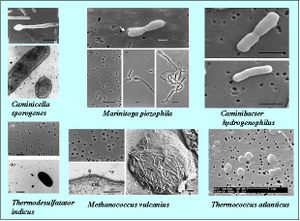Xylaria hypoxylon: Difference between revisions
| Line 16: | Line 16: | ||
==Ecology and Pathogenesis== | ==Ecology and Pathogenesis== | ||
The fungi appears throughout the year but it is more noticeable during winter and autumn at this time, the whole fruiting body turns black.[1] | The fungi appears throughout the year but it is more noticeable during winter and autumn at this time, the whole fruiting body turns black and also habitat to gregarious to clustered on rotting wood.[1] X. hypoxylon also contains a carbohydrate-binding protein, a lectin, with a unique sugar specificity, and which has potent anti-tumor effects in various tumor cell lines, The pyrone derivative compounds named xylarone and 8,9-dehydroxylarone also have cytotoxic activity and several cytochalasins, compounds that bind to actin in muscle tissue, have been found in the fungus.[4] | ||
X. hypoxylon also contains a carbohydrate-binding protein, a lectin, with a unique sugar specificity, and which has potent anti-tumor effects in various tumor cell lines, The pyrone derivative compounds named xylarone and 8,9-dehydroxylarone also have cytotoxic activity and several cytochalasins, compounds that bind to actin in muscle tissue, have been found in the fungus.[4] | |||
==References== | ==References== | ||
Revision as of 14:00, 22 July 2013
Classification
Domain/Superkingdom/Kingdom; Phylum; Class; Order; Family [Others may be used. Use NCBI link to find]
Genus Species
Description and Significance
The scientific name of “Xylaria hypoxylon” was given to this ascomycetous fungus by Carl Linnaeus in 1753, Synonyms of “Xylaria hypoxylon” include Clavaria hypoxylon L., Sphaeria hypoxylon (L.) Pers. Sphaeria ramosa Dicks and Xylosphaera hypoxylon (L.) Dumort. Xylaria hypoxylon, commonly called the Candlesnuff Fungus is a fungus in the genus Xylaria.[1] The fruit bodies, characterized by erect, elongated black branches with whitened tips, typically grow in clusters on decaying hardwood. The fungus can cause a root rot in hawthorn and gooseberry plants.[2]
Structure, Metabolism, and Life Cycle
Interesting features of its structure; how it gains energy (how it replicates, if virus); what important molecules it produces (if any), does it have an interesting life cycle?
Ecology and Pathogenesis
The fungi appears throughout the year but it is more noticeable during winter and autumn at this time, the whole fruiting body turns black and also habitat to gregarious to clustered on rotting wood.[1] X. hypoxylon also contains a carbohydrate-binding protein, a lectin, with a unique sugar specificity, and which has potent anti-tumor effects in various tumor cell lines, The pyrone derivative compounds named xylarone and 8,9-dehydroxylarone also have cytotoxic activity and several cytochalasins, compounds that bind to actin in muscle tissue, have been found in the fungus.[4]
References
[1]First Nature. Xylaria hypoxylon (L.) Grev. - Candlesnuff Fungus http://www.first-nature.com/fungi/xylaria-hypoxylon.php [2]Horst RK, Westcott C. (2001). Westcott's plant disease handbook. Boston: Kluwer Academic Publishers. p. 533. ISBN 0-7923-8663-9. Retrieved 2009-12-21. [3] [4] Qinghong Liua, Hexiang Wanga. First report of a xylose-specific lectin with potent hemagglutinating, antiproliferative and anti-mitogenic activities from a wild ascomycete mushroom. http://www.sciencedirect.com/science/article/pii/S0304416506002091
Author
Page authored by _____, student of Mandy Brosnahan, Instructor at the University of Minnesota-Twin Cities, MICB 3301/3303: Biology of Microorganisms.

